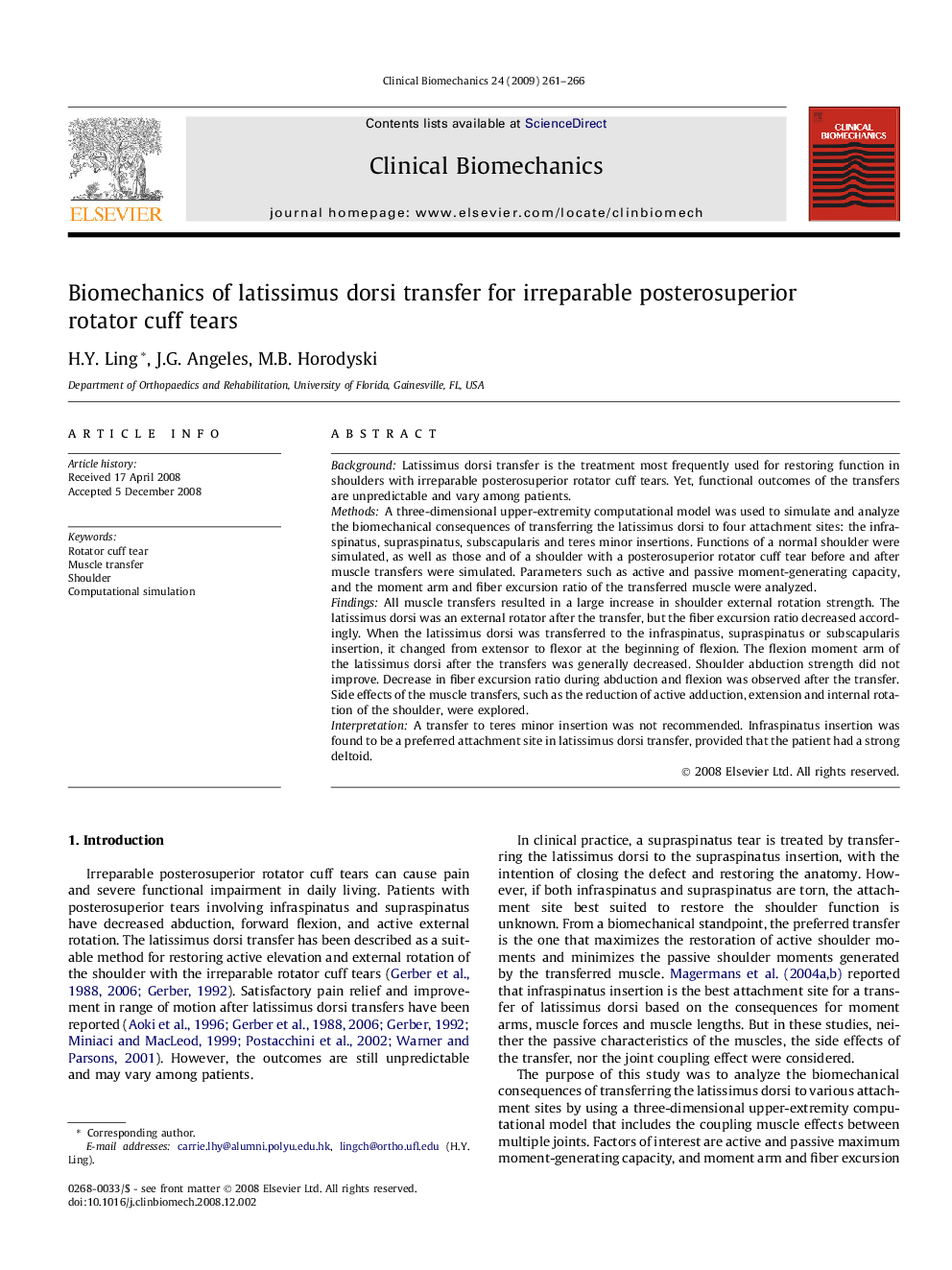| کد مقاله | کد نشریه | سال انتشار | مقاله انگلیسی | نسخه تمام متن |
|---|---|---|---|---|
| 4050902 | 1264964 | 2009 | 6 صفحه PDF | دانلود رایگان |

BackgroundLatissimus dorsi transfer is the treatment most frequently used for restoring function in shoulders with irreparable posterosuperior rotator cuff tears. Yet, functional outcomes of the transfers are unpredictable and vary among patients.MethodsA three-dimensional upper-extremity computational model was used to simulate and analyze the biomechanical consequences of transferring the latissimus dorsi to four attachment sites: the infraspinatus, supraspinatus, subscapularis and teres minor insertions. Functions of a normal shoulder were simulated, as well as those and of a shoulder with a posterosuperior rotator cuff tear before and after muscle transfers were simulated. Parameters such as active and passive moment-generating capacity, and the moment arm and fiber excursion ratio of the transferred muscle were analyzed.FindingsAll muscle transfers resulted in a large increase in shoulder external rotation strength. The latissimus dorsi was an external rotator after the transfer, but the fiber excursion ratio decreased accordingly. When the latissimus dorsi was transferred to the infraspinatus, supraspinatus or subscapularis insertion, it changed from extensor to flexor at the beginning of flexion. The flexion moment arm of the latissimus dorsi after the transfers was generally decreased. Shoulder abduction strength did not improve. Decrease in fiber excursion ratio during abduction and flexion was observed after the transfer. Side effects of the muscle transfers, such as the reduction of active adduction, extension and internal rotation of the shoulder, were explored.InterpretationA transfer to teres minor insertion was not recommended. Infraspinatus insertion was found to be a preferred attachment site in latissimus dorsi transfer, provided that the patient had a strong deltoid.
Journal: Clinical Biomechanics - Volume 24, Issue 3, March 2009, Pages 261–266